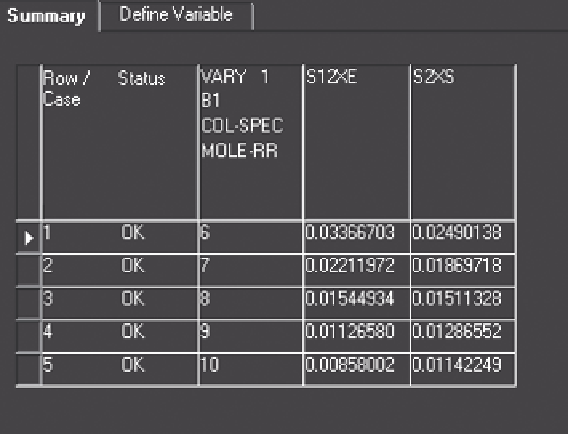Information Technology Reference
In-Depth Information
which corresponds to about 1% water in the reactor feed. The process description did
not indicate what quantity of water is required in the reactor. Thus, 40 lbmol of water
per 100 lbmol of feed is not suitable with the process description given.
12.6 ANALYZING THE RIGOROUS DISTILLATION
The distillation feed from Example 12.2 using a 3-lbmol/hr water feed was employed
for the preliminary calculations in preparation for designing and then simulating the
column. The feed with appropriate column specifications was employed with a DSTWU
block to obtain an estimate of the number of stages, feed stage location, and reflux
ratio required. These results may be found at Examples/ExampleTwelve-3a. The results
were used to explore the design parameters of the column with several RadFrac
runs. The results of these runs culminated in a Sensitivity study with Radfrac at
Examples/ExampleTwelve-3b. The desired styrene product composition was about 0.98
mole fraction. Figure 12.6 shows the effect of reflux ratio on the two product compo-
sitions. Here S12XE and S2XS are the mole fractions of ethylbenzene in stream 12
and styrene in stream 2, respectively. The column operates with 60 total stages, feed
on stage 30, and a distillate rate of 183 lbmol/hr. The external reflux ratio required is
about 9. Note that there is a slight amount of hydrogen in the feed; therefore, the use
of a partial condenser is imperative.
12.7 INTEGRATING THE RIGOROUS DISTILLATION
INTO THE FLOWSHEET
Introducing the converged rigorous distillation results of ExampleTwelve-3b into the
converged flowsheet of ExampleTwelve-2 with the sensitivity study removed produces
Example Twelve-4a. This example does not converge and produces several errors,
Figure 12.6
Effect of reflux ratio on product composition.










